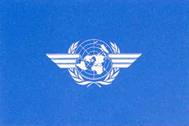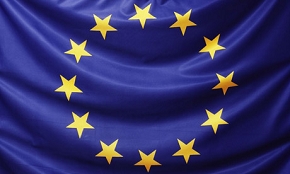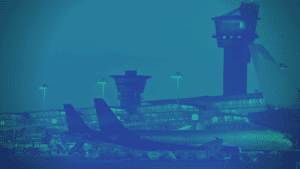 The International Civil Aviation Organisation (ICAO) was tasked in 1997 by Parties under the UNFCCC to reduce international aviation emissions. But 16 years later, one week ahead of the ICAO triennial Assembly meeting in Montreal, an effective global deal is far from reach. The EU caves in and announces that it will further limit its Emissions Trading Scheme (EU ETS) for intra-European flights pending a global agreement through ICAO.
The International Civil Aviation Organisation (ICAO) was tasked in 1997 by Parties under the UNFCCC to reduce international aviation emissions. But 16 years later, one week ahead of the ICAO triennial Assembly meeting in Montreal, an effective global deal is far from reach. The EU caves in and announces that it will further limit its Emissions Trading Scheme (EU ETS) for intra-European flights pending a global agreement through ICAO.
Air travel accounts for 5-14% of global climate emissions and is currently the fastest growing transportation sector. Nevertheless, aviation emissions remain unregulated. If aviation was a country, it would be the 7th largest CO2 emitter. Pressure is mounting on the International Civil Aviation Organization (ICAO) to agree to a set up a global market based mechanism to reduce aviation emissions during their next triennial Assembly in September 2013.
ICAO has proposed several options of how such a global market based measure to could look like, including both a 100% offsetting scheme as well as a global cap-and-trade scheme. Recently the International Air Transport Association, the aviation’s industry body, has declared that a global offsetting scheme would represent the most feasible option for the industry. But to achieve in-sector emissions reductions, any market based solution must go beyond pure offsetting.
For several years, the European Union had signaled the intention of addressing aviation emissions unilaterally if ICAO would not take stronger action and commit to a plan to reduce aviation emissions. Frustrated by the slow progress under ICAO, the EU decided that starting from 2012 all flights arriving to and flying from the EU would have to account for their emissions and be included in its EU-ETS.
The EU’s decision prompted very strong reaction, in particular from China, India and the US. They claimed that the EU’s unilateral approach would spark a trade war and infringe on national sovereignty. The EU quickly gave in to the international opposition and suspended its legislation for one year. The one year break should help create pressure and momentum to find a global solution under ICAO. The EU also made it clear that ICAO would need to agree on an immediate and meaningful framework and a realistic timetable for a global market based measure and an ambitious set of technological and operational measures. Without significant progress the EU claimed that it would include international flights in the EU-ETS starting in 2014.
Yet the EU seems to have changed its tune and has once again caved to international pressure of those who have no interest in curbing aviation emissions. Already ahead of ICAO’s triennial Assembly meeting this October the EU has offered again to keep its suspension for intercontinental flights in place. Given the prospect of a potential 100% global offsetting deal that would not incentivise but delay in-sector reductions, this is a dangerous step that further delays action to reduce aviation emissions.
Any global market based measure to reduce aviation emissions needs to ensure reduction of in-sector emissions. Only a cap-and-trade scheme with a stringent cap and a limit on the use of offsets, combined with an ambitious set of technological and operational measures, can deliver actual emission reductions in the aviation sector.
For more information see https://carbonmarketwatch.org/category/aviation-shipping/
OFFSETS USED BY AIRLINES IN 2012
Despite the ‘stop the clock’ derogation, compliance with the EU ETS for 2012 remained mandatory for flights operating within the EU. This means that, for example, an Indian carrier operating a flight from Strasbourg to London would still have to comply with the EU ETS. The EU ETS places a limit of 15% on the use of international offsets on aircraft operators. Under this limit, the maximum aggregate number of offsets allowed for the 1188 airlines covered by the EU ETS in 2012 was 12.5 million offsets. In May 2013, the European Commission released for the first time data on carbon offsets used by airline operators to comply with their EU ETS targets . Below some key facts of offsets used by airlines in 2012:
-
More than 1 million CERs come from 9 HFC-23 destruction projects, credits meanwhile been banned from the EU ETS over their lack of environmental integrity;
-
Easyjet, Lufthansa and Air France bought 420.000 CERs from three N2O adipic acid projects in China and South Korea, equally banned for similar reasons;
-
Lufthansa bought the largest junk of credits (650.000 ERUs) from a JI track 1 project that claims to have reduced Associated Petroleum Gas between
-
2007 and 2011 at the Priobskoe oil field, one of the largest oil fields in the world;
-
HFC-23 projects were the largest originators of CERs: 400.000 and 380.000 CERs originating from Chinese HFC-23 projects were sold to Easyjet and British Airways respectively;
-
The biggest emitters amongst airline operators in 2012 were Ryanair and Lufthansa;
-
In total, Ryanair purchased 1.1 million CERs from seven N2O reduction plants, four HFC-23 plants and three wind parks;
-
Lufthansa purchased 740.000 credits from three track 1 JI projects in Russia and Ukraine and from one N2O adipic acid project in China.
Other Articles in this Newsletter
-
Friend of the Court Brief filed in Panamanian Case Challenging CDM project Barro Blanco


